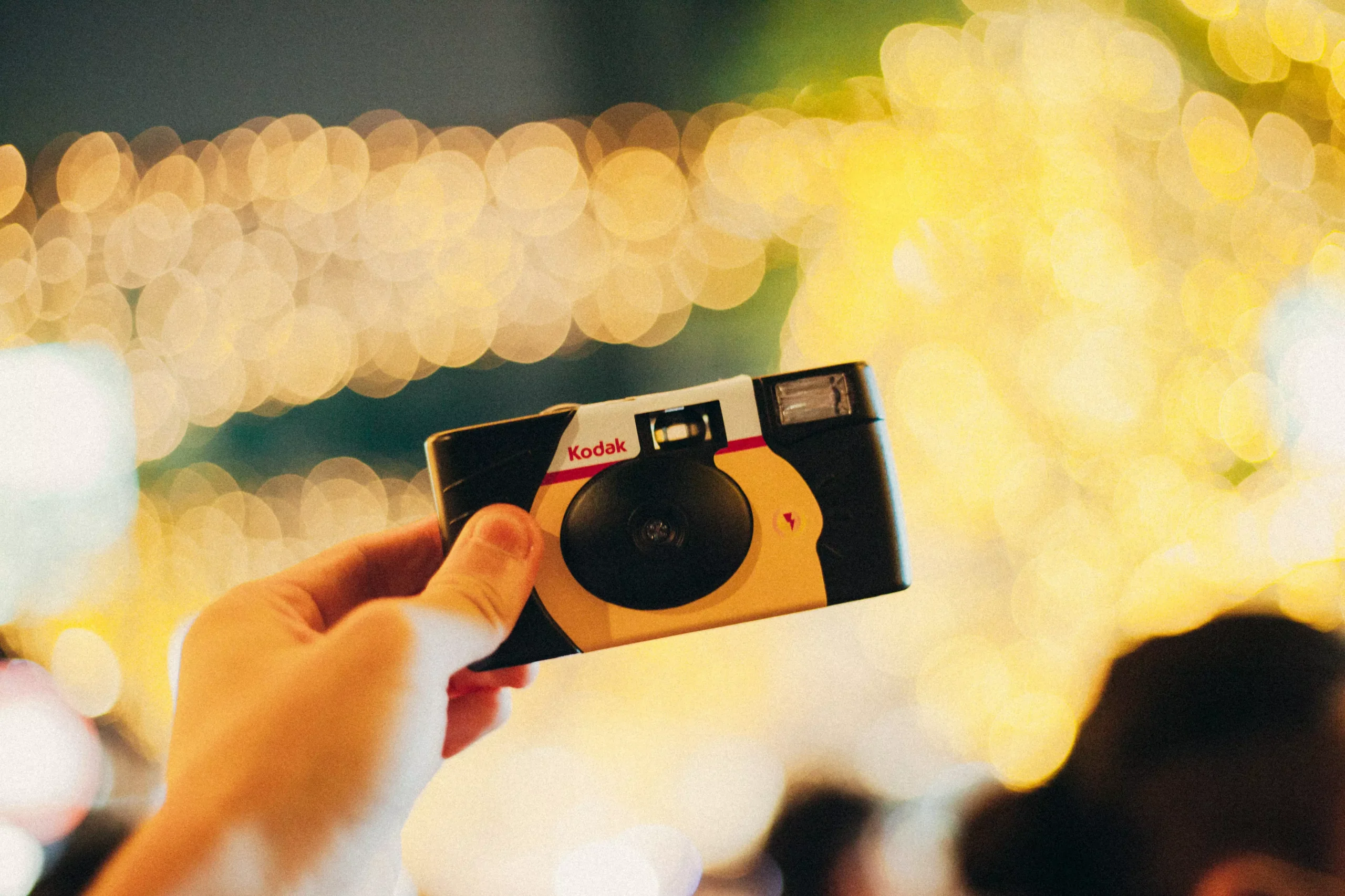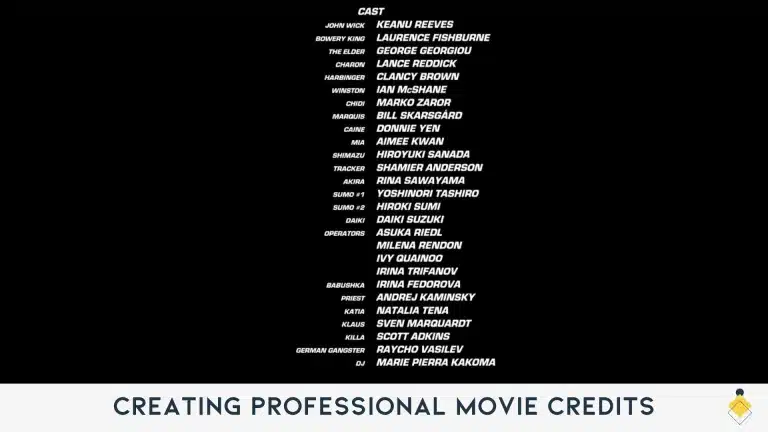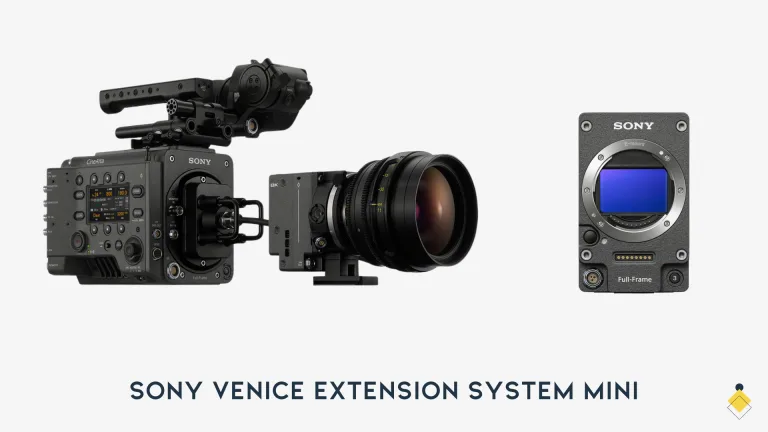Found an old disposable camera tucked away in a drawer and can’t wait to see what’s on it? I’ve been there—more than once, actually. Over the past year, I’ve sent film to nearly every major lab still developing disposable cameras in 2025, just to figure out which ones are actually worth using.
Whether you’ve just finished a roll from a recent trip or stumbled upon a forgotten camera full of surprises, I’ll walk you through exactly how to get it developed—step by step. I’ve tested the process myself, from carefully removing the film to choosing the right lab, mailing it out, and finally getting the scans back (sometimes with surprising results).
So if you’re wondering where to send your film, how long it’ll take, or what kind of quality you can expect, you’re in the right place. Let’s get into how to develop your disposable camera in 2025—what works, what to avoid, and which services came through with flying colors.
Let’s jump right in!
Understanding Disposable Cameras
A disposable camera is a camera that once it is used, it cannot be re-used. They are generally the size of a pack of gum, so they are easy to take with you wherever you go.
The great thing about disposable film cameras is that they are affordable and generally come with 27 exposures.
They can be used for a variety of reasons, such as taking pictures of friends and family, capturing a special moment, or even for your business.
There are many ways that you can get your disposable film camera developed, both online and in-store.
Once you have taken all your pictures and the film has been developed, you can trade them in for a fresh new one and start taking some more.
Some disposable cameras are more complicated than others, and we can break them down into different categories.
There are mainly 3 categories of disposable cameras.
1) Color Disposable Cameras
Kodak Fun Saver – Price 19.98
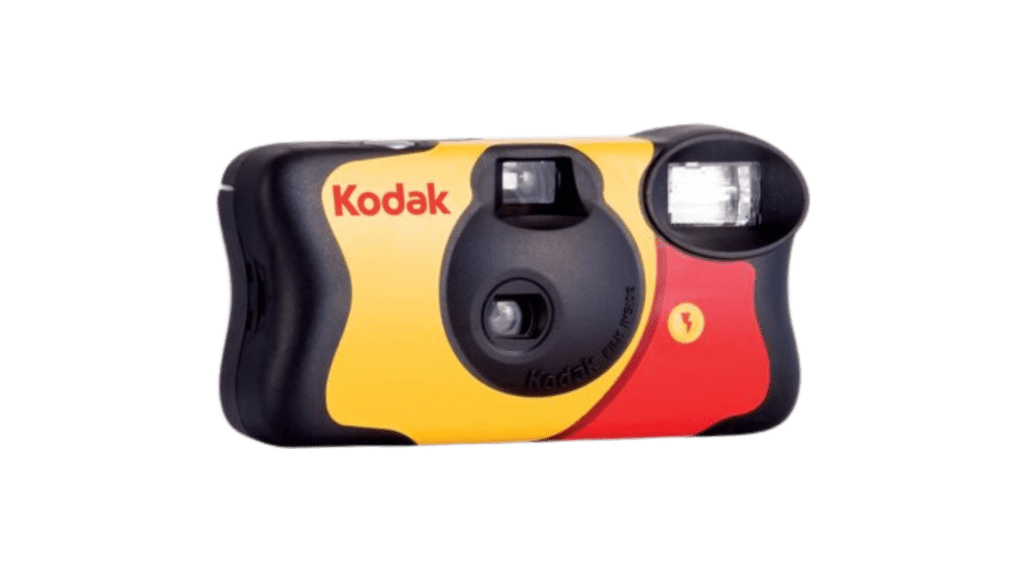
Lomo 400 Simple Use – Price $34.99

LomoChrome Purple Simple Use – Price $29.98
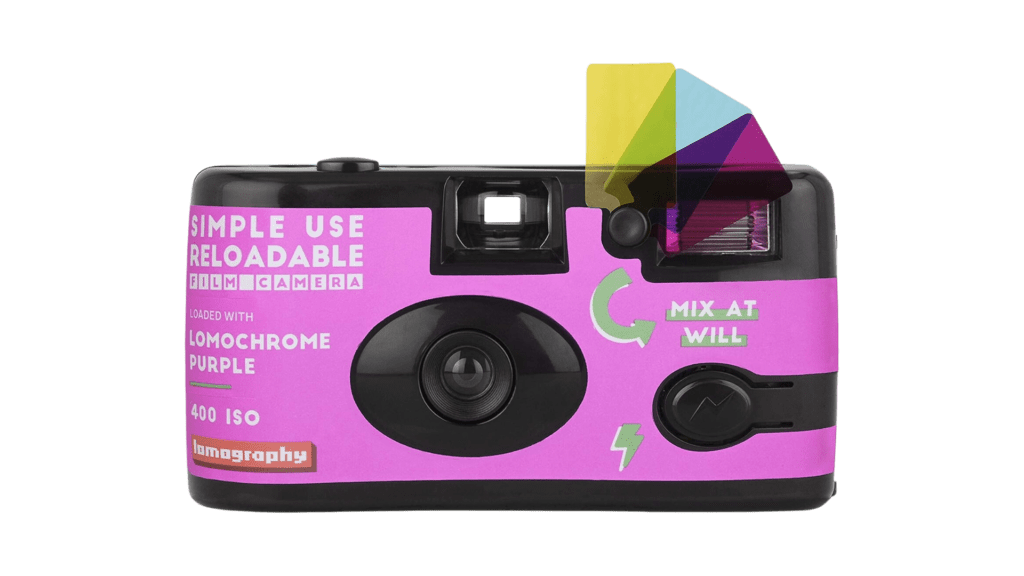
2) Black and White Disposable Cameras
Ilford HP5 Plus – Price $27.95 (Pack of 3)
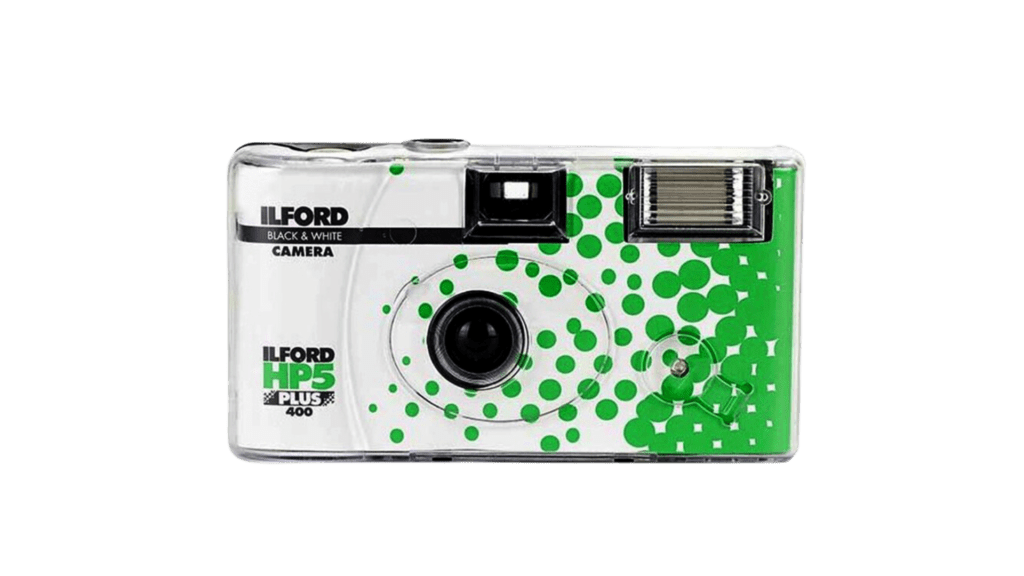
Ilford Single XP2 Use – Price $19.98
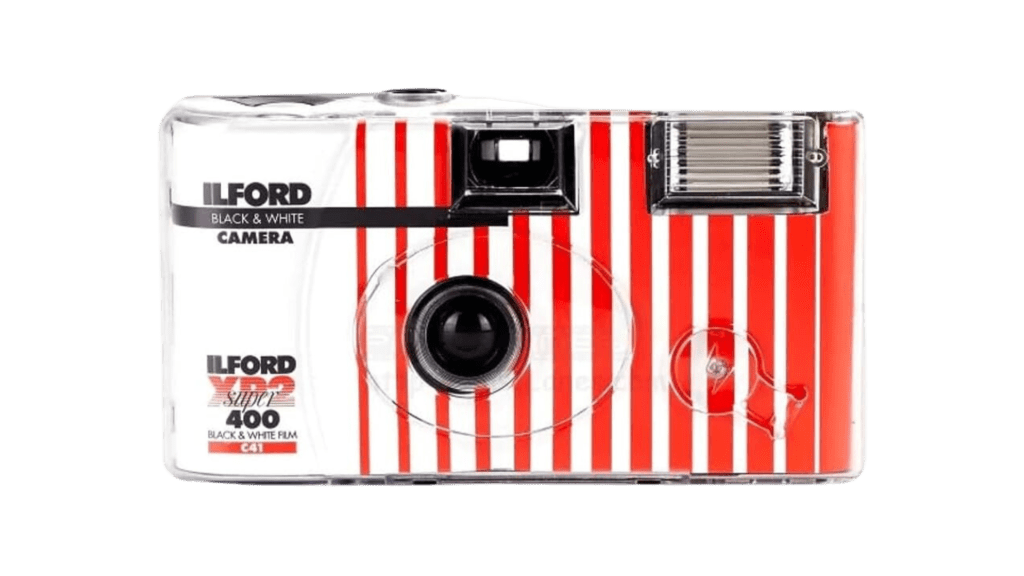
3) Waterproof Disposable Cameras
FujiFilm Waterproof Quick Snap 800 – Price $24.98
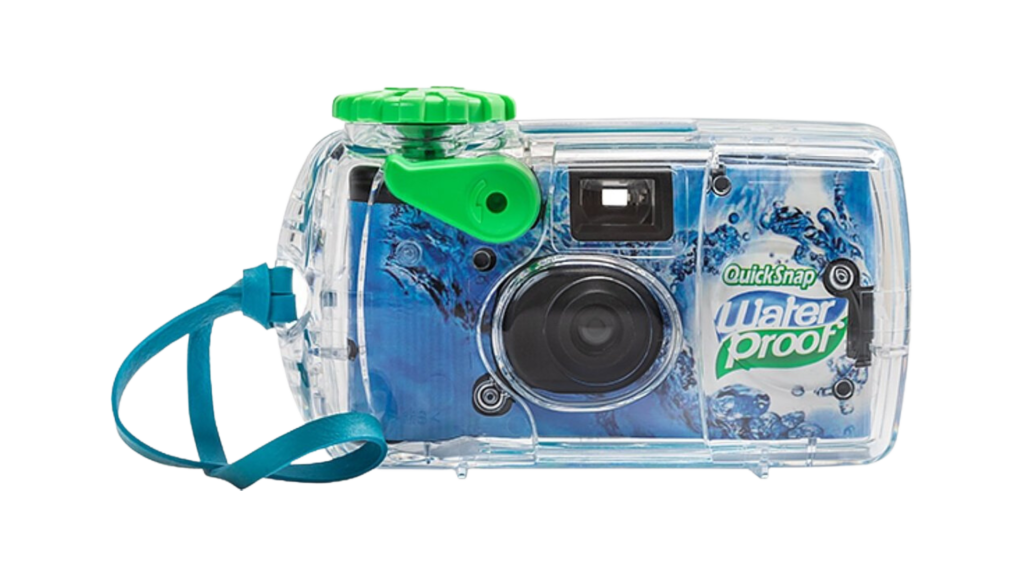
Kodak Water & Sport Waterproof – Price $23.98
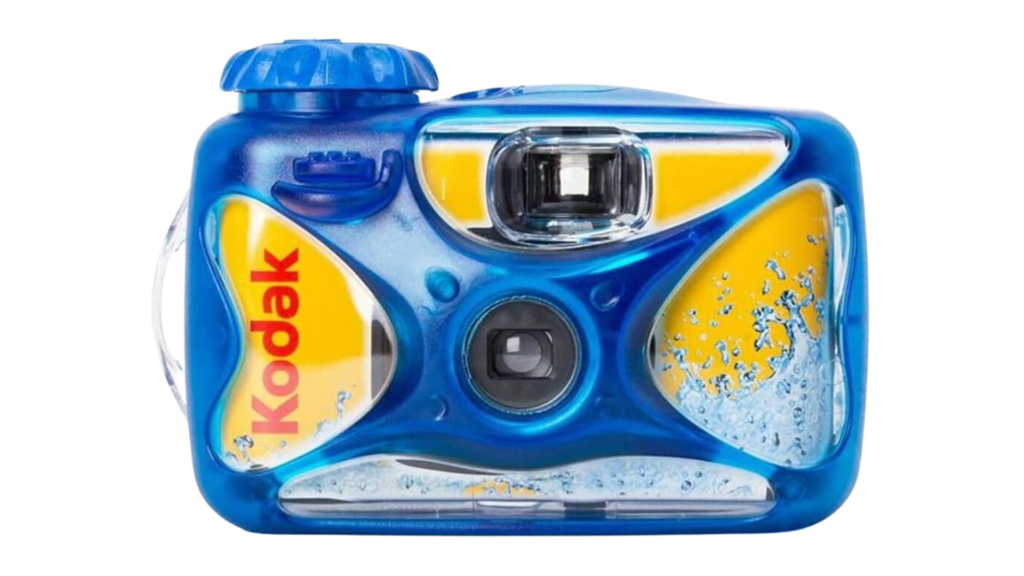
These cameras are usually inexpensive, but can still produce high-quality photos.
A disposable camera typically costs between $10 to $20 each and most people buy them at gas stations, convenience stores, or photography stores.
When finished with the photo roll, the film is sent to a developer to have it developed.
Exploring 35mm Film Cameras
35mm film cameras capture pictures on film that is 35 millimeters wide. They also come as single-use models, perfect for beginners. Each camera can take up to 27 photos. People prefer these cameras for their unique look compared to digital photos.
These cameras use color negative, black and white, or slide films. This choice changes how your pictures will look. Color films produce bright and lively images. Black and white films create classic looks.
Slide films give vivid colors with a glossy finish but need careful handling when developing the film.
Discovering Waterproof Disposable Cameras
Kodak Water & Sport and FujiFilm QuickSnap are waterproof disposable cameras. Kodak’s model can go 50 feet underwater, using MAX Versatility Plus 800 film. FujiFilm’s camera reaches 35 feet down without a flash.
Both offer 27 exposures on 800 ISO film, ideal for ocean or pool photos.
These cameras also suit outdoor use in any weather, as they don’t need power. They’re good for capturing clear shots during outdoor adventures, eliminating worry about harming valuable gear.
Unveiling Black and White Disposable Cameras
Black and white disposable cameras, like Kodak Tri-X 400, Ilford XP2, and Lomography B&W 400 Simple Use, use C-41 XP2 Black & White 400 ISO film. These cameras come with a flash. They produce photos with grainy textures and light leaks.
This type of film captures sharp black tones and shows detail in artistry. It performs well under various lighting conditions. Also, it highlights skin tones effectively. Single-use cameras are a unique choice for capturing memories without color.
Developing Options for Disposable Cameras
To get your disposable camera pictures, you have several options:
– Use local photo labs for film development.
– Visit stores like Walgreens or Walmart for convenience.
– Choose online services for easy film processing.
Visit Local Photo Labs
Local photo labs develop disposable camera film. They handle various film types, including 35mm and black and white. Developing regular film takes about 7-10 days. Other kinds may take up to 3 weeks.
Visiting a local lab allows face-to-face interaction. Staff can address questions and guide you in choosing photo options. This ensures your camera’s film turns into the photos you expect.
Use Online Film Developing Services
Mpix offers online film developing for disposable cameras. Send your camera by mail for simple processing. They handle rolls with 8, 12, 24, 27, and 36 exposures. Choose between standard scans or large scans.
Standard fits prints up to 5×7 inches; large suits up to 12×18 inches.
They charge a $7.95 flat rate for shipping both ways, including returning your negatives. Developing costs start at $13.95 per roll. This service allows easy uploading of pictures from single-use cameras to the internet or directly to your phone.
Find Retail Stores like Walgreens or Walmart
Walgreens charges $14.99 to develop a 24-exposure single-use camera, and you can get your pictures in a few days. Walmart offers a cheaper option at $10.96 with a 3-5 day wait for your shots.
CVS also provides film developing services, but prices range from $15-18 and are not easily found online. Each store has its own processing times and costs, so choose the one that best fits your needs.
Turning old-school snaps into digital treasures is affordable.
How to Develop Your Disposable Camera
To get your disposable camera developed, you can drop off the film or send it by mail. Decide if you want scans, prints, or digital files.
– Drop off your film or use a mailer for sending it.
– Choose between scans, prints, or digital copies of your camera pictures.
Drop Off or Mail Your Camera
You can take your camera to a local photo lab or send it by mail. For mailing, use a sturdy envelope and, if possible, a special film mailer for protection. It usually takes 3-7 business days for the mail to get processed.
Once processed, you receive a free digital gallery online and your developed negatives are sent back to you.
Decide if you want your pictures as prints, scans, or on your phone.
Select Scanning, Printing, or Digital Options
After dropping off your disposable camera, choose from scanning, printing, or digital delivery for your pictures.
- Scanning converts film images into digital files. The Darkroom can send these on DVD or USB.
- Printing gives you physical photos to hold or frame.
- Digital options allow fast sharing by sending pictures to your email or allowing downloads from a website.
- Some services offer adjustments for color, contrast, and density to enhance photo quality.
- Orders typically get processed and shipped in 3-7 business days.
- Check available formats at the developing service since not all offer the same scan and print options.
Conclusion
Developing film from disposable cameras is both exciting and nostalgic. Local photo labs, online services, or stores like Walmart can do this. They offer scans, prints, or digital files on DVD or USB.
The camera and film type determine the best place to go. So, when you use a throwaway camera, you have options to make those memories last!
FAQ – How To Get A Disposable Camera Developed
You can develop film from a disposable camera by taking it to a local photo lab or using online film processing services. Many photo labs offer services specifically for single use cameras, ensuring you get the best quality for your camera pictures on your phone or prints.
To get disposable camera pictures back quickly, choose a photo lab that offers expedited services. Please note that turnaround times can vary, so it’s best to ask about their processing speed when you drop off your camera.
Yes, many film processing services offer the option to receive your developed film negatives along with digital copies on a CD. This allows you to easily access your camera pictures on your phone.
You can develop various film formats, including 110 and Advantix film. Many photo labs provide specialized services for these formats, so be sure to check if they can handle the specific film format you have.
Yes, you can scan your developed film at home using a scanner designed for film negatives. Alternatively, you can use a scanning app on your smartphone to digitize your images, but the quality may vary.
To remove the film from a disposable camera, you should take it to a professional who can safely extract it without exposing the film to light. Attempting to do it yourself can lead to blurry images or ruined film.
Yes, many photo labs offer specialized film processing services for E-6 and B&W film. If you have specific needs, such as true black and white processing, be sure to inquire about their capabilities.
To ensure the best quality when developing your film, choose a reputable photo lab known for their expertise in film processing. Additionally, consider requesting high-quality scans or prints to preserve the details of your images.
If your film is damaged or exposed, it’s best to consult with a professional lab to assess the situation. They may be able to salvage some images, but results can vary depending on the extent of the damage.

